The Road Trip - Part Two
Playing Tourist: Trains, Boats, and Exhaustion
After a lazy New Year’s Day, the kind where you mostly shuffle between the bar and the pool, we decided it was time to shake off the cobwebs and play tourist. The chosen adventure? A combination tour of one of Thailand’s famous “train markets” paired with a visit to a “floating market.” You’ve probably seen these advertised in glossy brochures or Instagram reels aimed squarely at foreign tourists. Well, sign us up!
First, let’s talk about train markets. What are they? A little Googling will reveal that they’re scattered across Southeast Asia, and they’re exactly what they sound like—markets that set up shop right on the train tracks. Yep, vendors spread their goods perilously close to where the train will rumble through, retracting awnings and pulling back produce mere moments before the train arrives. It’s as if someone said, “You know what this bustling market scene needs? A massive, steel locomotive plowing through it at regular intervals.” Naturally, this insanity has become a magnet for tourists (and their money).
Our tour group—about 20 people from all over the globe, including Americans, Spaniards, Germans, and Italians—was fluent in English, even us Americans. We were whisked away in a van to catch the train before it arrived at the main station. Pro tip: If you wait to board at the main station, you’ll be crammed in with 500 other tourists battling for seats. Instead, our guide had us board earlier, and TC and I scored prime window seats. No A/C, but hey, most of the fans worked.
As the train pulled into the main station, a sea of humanity (mostly tourists armed with cameras) poured into the train. It was like a game of sardines, only with sweat and selfie sticks. By the time we were en route to the market, the train was so packed that some people couldn’t even squeeze on. About five minutes before we reached the market, our guide gave us the cue: cameras were ready!
Pulling into the market was pure madness. Crowds stood with noses and bodies mere inches from the train, waving and snapping pictures. From the train, it felt like being a celebrity on a red carpet, except instead of paparazzi, it was a mix of fascinated tourists and locals with questionable spatial awareness. Once we disembarked, the roles reversed—we joined the crowd of onlookers to snap our photos of the train crawling through the market, vendors pulling back their stalls at the last possible moment. It was chaotic, noisy, and utterly fascinating. It's worth doing once.
Unfortunately, the same cannot be said for the floating market.
Historically, floating markets served a practical purpose for locals. Boats would gather in a central spot to barter goods like vegetables, fish, and flowers. Nowadays, many of these markets have traded authenticity for tourist dollars. After a short wait in line, we boarded a long-tail boat—imagine a floating toothpick, just wide enough for two people. Our pilot expertly navigated us through a tangle of other boats and vendors hawking everything from coconuts to cheap souvenirs.
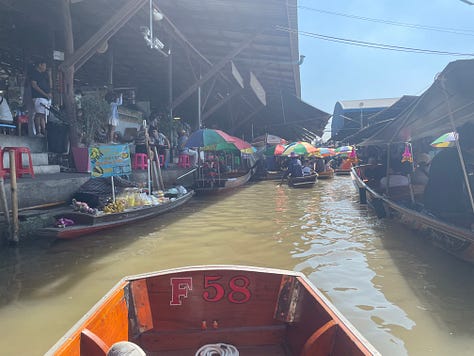
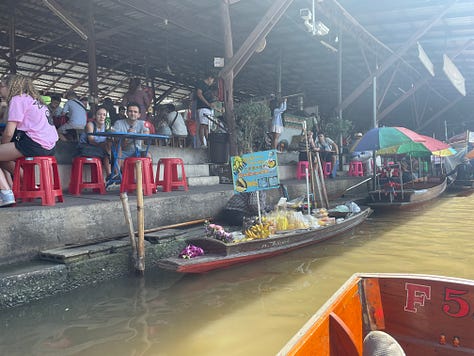
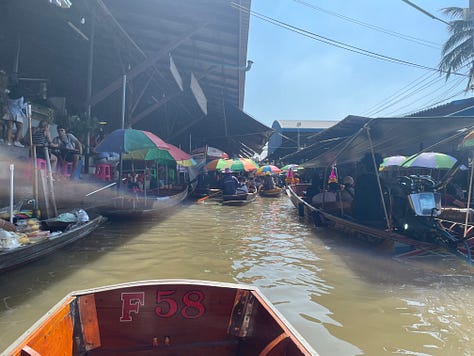

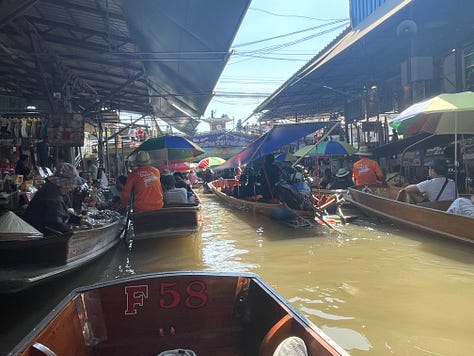



The vibe? Less charming, more chaotic. Most vendors weren’t even on boats—they were stationed on the shore, yelling at tourists to buy trinkets. To make matters worse, some of the long-tail boats were motorized, outfitted with automobile engines that belched fumes into the already crowded waterways. By the end of the circuit, we were quite literally exhausted.
The day ended with cocktails by the hotel pool, a few rounds of backgammon, and a light snack—because nothing says “recovering from tourist traps” like a good drink and a quiet evening.
Would I recommend the train market? Absolutely, if only for the spectacle of it all. The floating market? Let’s just say once was more than enough.

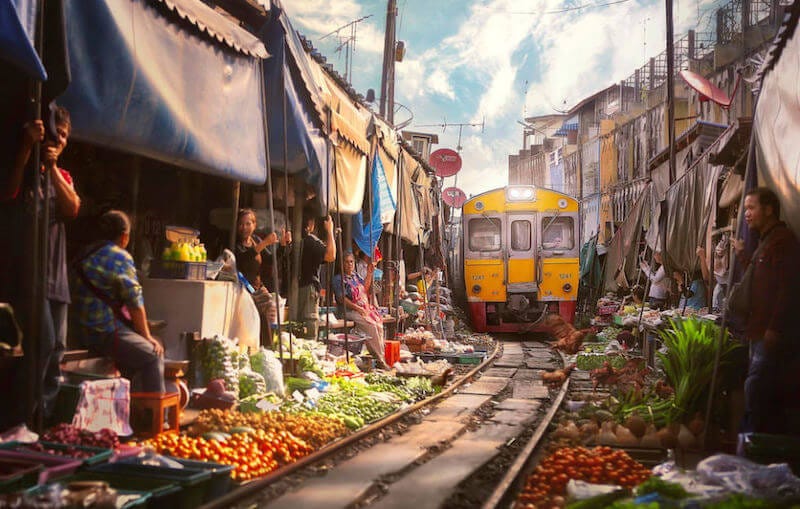

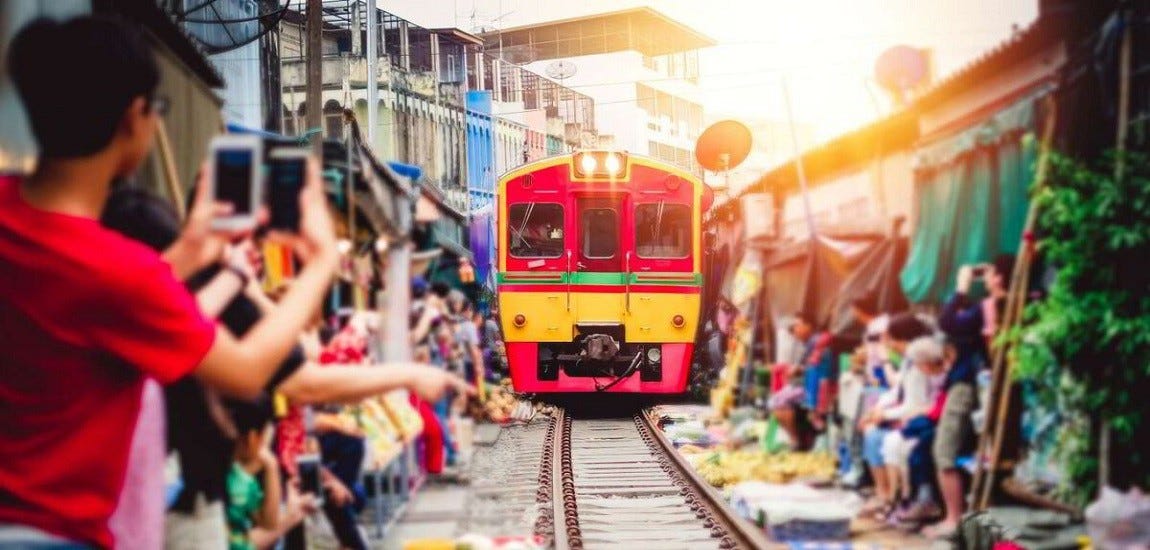
Very engaging keep up the great work whoop whoop
More than ‘playing tourist’, this was so engaging that I’d call it ‘playing travel reporter’.